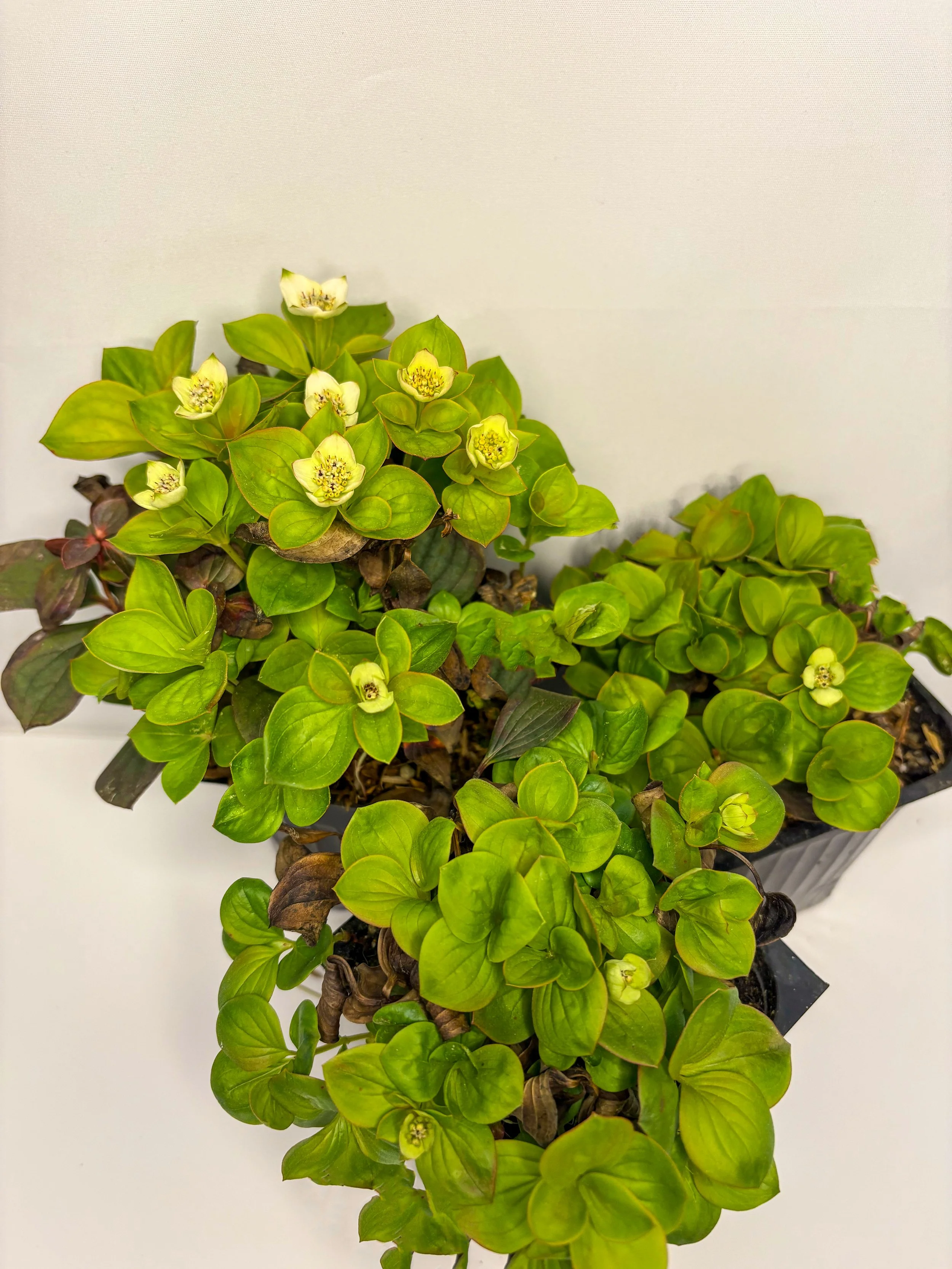How to Care for Creeping Dogwood (Cornus canadensis)
How to Plant:
Dig a hole twice as wide and the same depth as the root ball.
Gently remove the plant from its container and loosen the roots if compacted.
Place the root ball level with the soil surface.
Backfill with a mix of native soil and organic compost, then press gently to settle.
Water thoroughly after planting and apply 1–2 inches of mulch, keeping it away from the stem.
Where to Plant:
Best planted in part shade to full shade locations.
Thrives in cool, moist, well-drained soil that is rich in organic matter.
Excellent as a groundcover in woodland gardens, shaded borders, or under taller trees.
Space plants 12–18 inches apart to allow spreading by rhizomes.
Watering:
Water deeply 2–3 times per week during establishment.
Keep the soil evenly moist—avoid letting it dry out completely.
Once established, water during dry spells or hot periods to prevent stress.
Maintenance:
Apply a light compost or organic mulch in early spring to enrich soil.
No routine pruning needed—remove only dead or damaged foliage.
Creeping Dogwood is low maintenance once established, but benefits from consistent moisture.
Watch for signs of heat stress in full sun; this plant prefers cooler, shaded spots.





